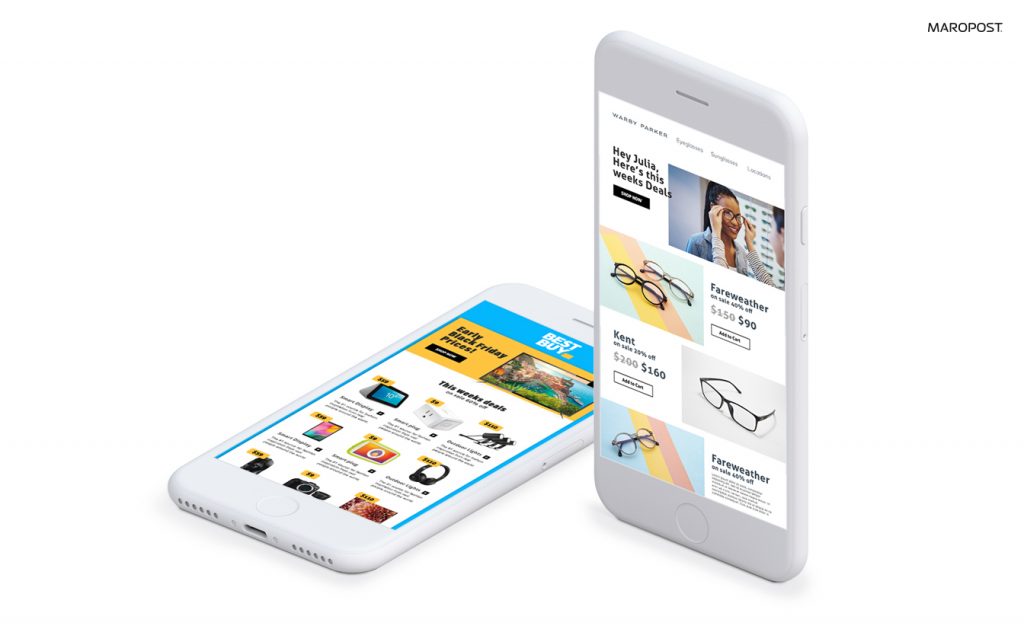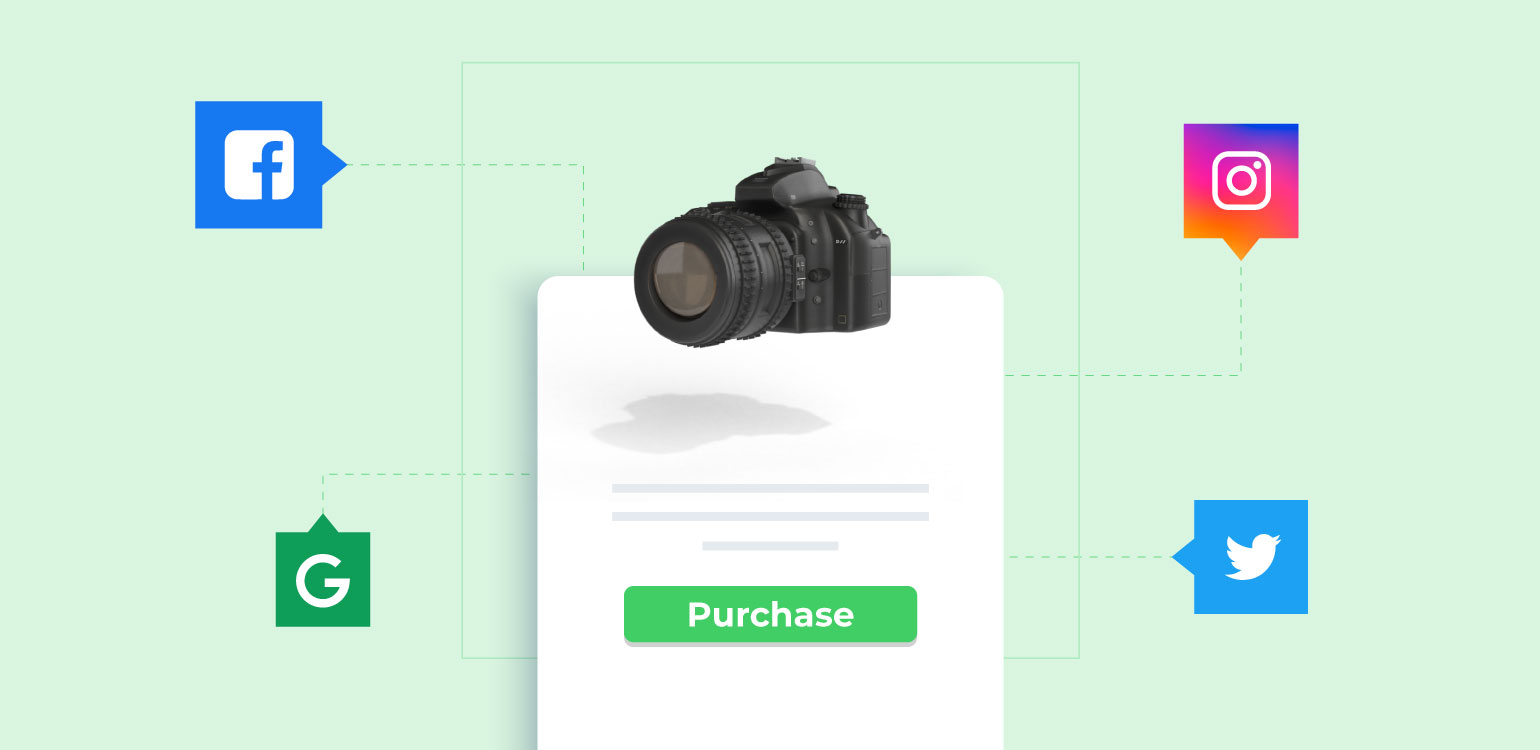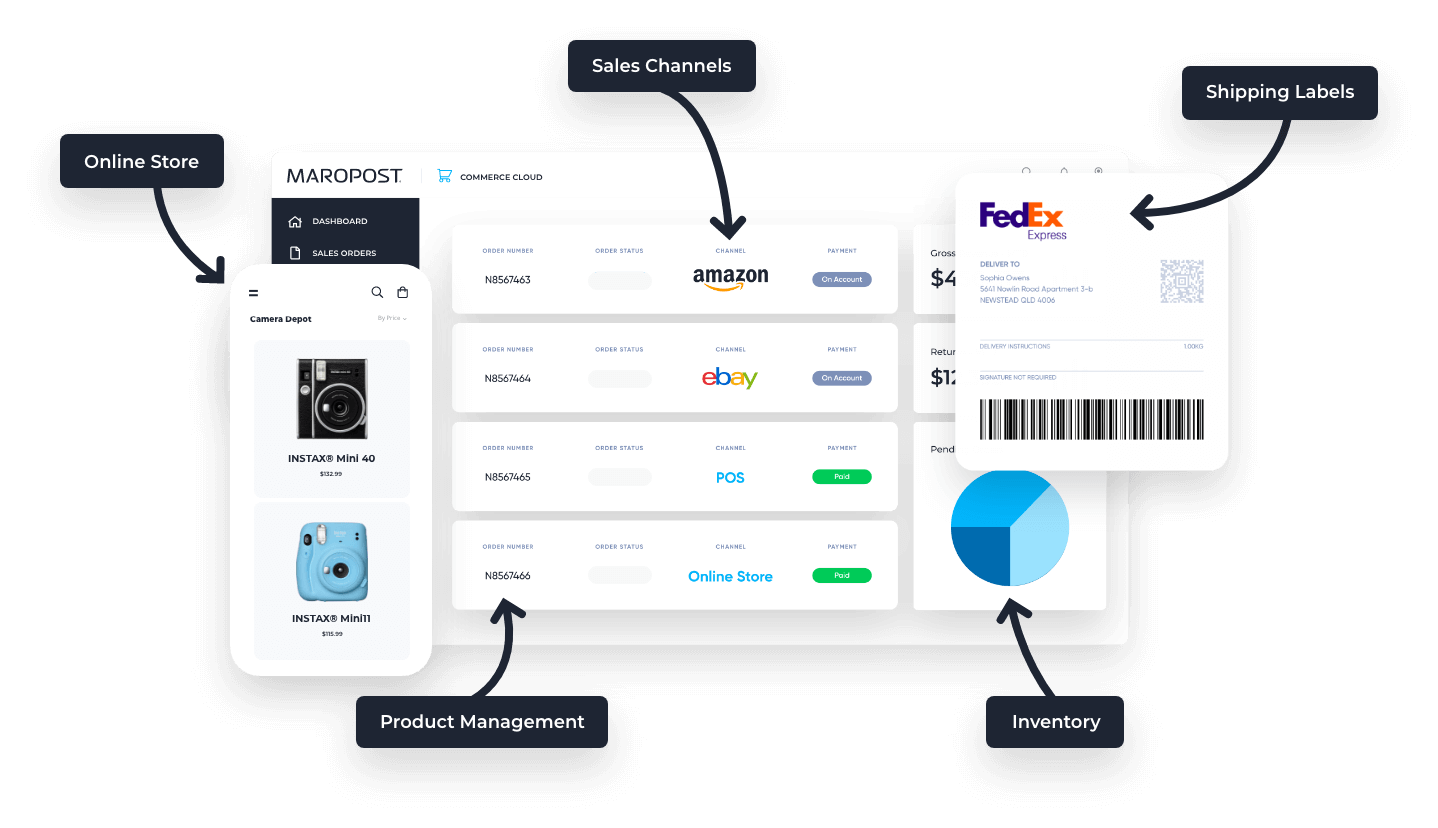What is Omnichannel Marketing?
Omnichannel marketing is a strategy that companies use to create a seamless, personified, and unified customer experience for customers regardless of their channel.
It is a marketing strategy that encompasses every step of a customer’s journey from initial contact to purchase. It is a marketing strategy that you can use to provide your customers with an intuitive and seamless experience across all channels.
Why is Omnichannel Marketing important?
Omnichannel marketing has become a crucial part of the digital marketing realm because customers nowadays tend to engage companies at several touchpoints through different channels before deciding to buy.
Experts at Google have found that more than 90% of customers who own multiple devices switch between three of their devices per day to get things done. Therefore, all these channels must be simultaneously influencing the consumer to buy from you.
When omnichannel marketing tactics are efficiently deployed, the customer picks up where they left off. Even when a customer changes the device/digital channel (social media or other communication channel) through which they were interacting with your brand, it is the case.
In other words, it allows you to deliver tailored messages to your customers based on their behavior as they engage your company.
(Read also: 5 Benefits of Omni-Channel marketing for SMBs).
Omnichannel Marketing vs. Multichannel Marketing
Omnichannel marketing is not to be confused with multichannel marketing. While both share many similarities, omnichannel marketing and multichannel marketing are not the same. Companies that use multichannel marketing strategies will have an identical message to their customer across multiple channels.
An omnichannel strategy, on the other hand, is predicated on the concept of personalization. It arises from the understanding that every customer is different. As a result, what works for A may not work for B.
Building an Omnichannel Marketing Strategy
Adopting omnichannel marketing is a lot easier now than it was before. So, every brick and mortar store should make it a top priority. The steps to follow are:
- Get your entire team on board
- Learn everything you can from customer data
- Target your messages appropriately
- Test, measure and test again
1. GET YOUR ENTIRE TEAM ON BOARD
The first step to take in implementing omnichannel marketing in your company is to get every single member of your team on board. Everyone has to be on the same page if you hope to adopt this marketing strategy effectively. This step is crucial because every individual member of your team is responsible for some part of your customers’ journey. So if they aren’t on board with your strategy, they’ll unintentionally be working contrary to your plans.
Also, because these team members each have they interact with your customers, they will gather all the data you need. Members of your team should harness every tool and resource available to collect and store every relevant information to customer experience.
Content Management Systems and Customer Relationship Systems are handy tools that can brand use to gather quantitative and qualitative data. They allow companies to record a customer’s journey from prospect to customer. When every team member collects data pertinent to their part of the customers’ user experience, you will have acquired every piece of information you need about every point where the customer interacts with your company.
The importance of data in omnichannel marketing cannot be overemphasized. Robust customer data is the foundation on which any effective omnichannel marketing is built. Any omnichannel marketing campaign is doomed to fail without robust customer data.
2. LEARN EVERYTHING YOU CAN FROM CUSTOMER DATA
Gathering robust, high-quality data is only the first step. You must break down this data into smaller comprehensible bits so that you can fully understand it. Learning everything from customer data is a critical step in omnichannel marketing. You must perform a complete examination of every part of your customer’s relationship with your company.
There are several quantitative and qualitative analytical tools you can use to analyze the data you have gathered. This in-depth analysis will provide you with everything you need to create effective strategies for omnichannel marketing.
You can even go one step further by collecting user feedback. User feedback is an excellent source of user data because such information is coming right from the source. User feedback data can give you insights into your company’s performance, and what parts of the company need improvement.
In omnichannel marketing, the importance of truly understanding your customers cannot be overemphasized. You should invest your time and resources to learn as much about your customers as possible. Find how their characteristics are, the things that influence their decisions, what channels they use to interact with your company, their goals, and challenges.
It would be best if you even tried to put yourselves in your customers’ shoes to get a feel for what they experience on the path to purchase your products and services. Get on your website and browse through the way a customer would. Try out the mobile app (if you have one) and make a purchase.
Leave a message for customer service and see how much time it takes to get a response. It would be best if you even got other people to do the same and then relate their experience to you. All of these tactics will paint a very vivid picture of your customers’ journey for you.
3. TARGET YOUR MESSAGES APPROPRIATELY
Now that you and your marketing team have come to a great understanding of who your customers are, their goals, their behavior, the various channels they use, and the challenges they face, you can now proceed to the next step. The next step is to create a robust omnichannel marketing strategy.
The fundamental ingredient of every omnichannel marketing strategy is providing a personalized user experience for every customer. In other words, personalization is crucial in omnichannel marketing. Without personalization, omnichannel marketing becomes multichannel marketing.
The customer data that you and your team have gathered will play a key role here. You must meticulously sift through the customer data and apply all the knowledge you acquired in step two above to assign your customers into different segments. You should ensure that every segment consists of customers will the same characteristics, behavior, goals, shopping habits, interests, etc.
Some of the most effective ways to segment your customers are discussed below:
- Segmentation by profile data: This form of segmentation is executed based on criteria such as a customer’s age, his/her gender, marital status, geographical location, and other demographics.
- Segmentation by campaign engagement: You can also create customer segments based on how they engage with your company campaigns and their channels to interact with those campaigns.
- Segmentation by shopping behavior: Shopping habits are another highly effective criteria that you can use to segment your customers. There are many stages between prospects and customers, and these stages are unique to every company. You should segment each customer by what stage they are, how often your customers stop at individual steps, when last they made a purchase, etc.
It may even be necessary further to break these segments into smaller and more defined sub-segments as the case may be. It will help you achieve the highest level of personalization possible.
When you have successfully created segments and sub-segments for all your prospects and customers, you can proceed to craft personalized messages. Ensure that you make provisions for each component and sub-segment. You should only send these personalized messages to customers who will find them useful.
You may also daft out messages that will be triggered automatically by your customers’ actions or inactions. These automated messages must also be created with the target audience in mind. Sending only personalized messages to your customers will undoubtedly increase your response rate and help you achieve all your company goals.

4. TEST, MEASURE, AND TEST AGAIN
The final step in omnichannel marketing is the test-measure-retest stage. In this stage, you will actively monitor the performance of your strategy. You will have to observe very carefully which kinds of messages each customer segments respond to the most.
Omnichannel marketing is not a one size fits all marketing strategy. Instead, it is a practice that must be deployed, observed, measured, optimized, and redeployed to maximize its potentials. You must learn to test the several variables that come to play in the way you deliver your messages.
Every individual company will have the magic recipe that it uses. Here are a few tips that can help you find yours:
- Experiment with different kinds of messages,
- Change the length of your messages,
- Be creative with your email headers or subject lines,
- Find out what types of images your customers respond to most,
- Try changing delivery times to find out if customers respond better when you send in the morning or later in the day
Omnichannel marketing is one of the most effective marketing strategies in business today. Customers are now more omnichannel in how they interact with companies, so those that deploy these strategies stand to reap the maximum benefits of every customer engagement.
Studies have shown that using three or more channels for marketing campaigns can increase the customer purchase rate by up to 250%. Customers are more likely to engage with a brand that delivers personalized messages to them at every different point of contact, and they are more likely to be loyal to such a brand.
If you haven’t hopped on the omnichannel train already, now is the time! It is better late than never, especially when there are so many benefits to enjoy.
Need to chat about your omnichannel marketing strategy?
More than 10,000 marketers use Maropost to engage with their prospects and customers through emails, SMS, social media and more. We’re here to help you growing your business!
Chat Now

